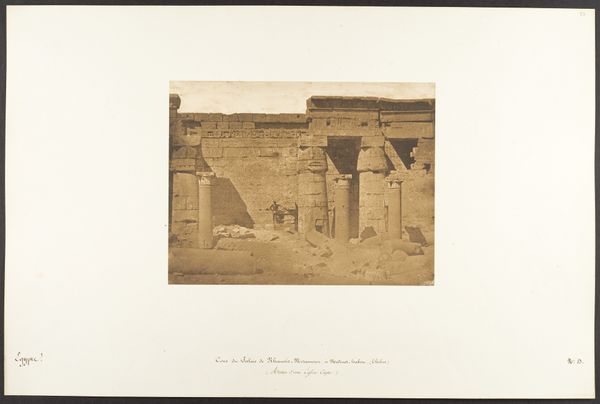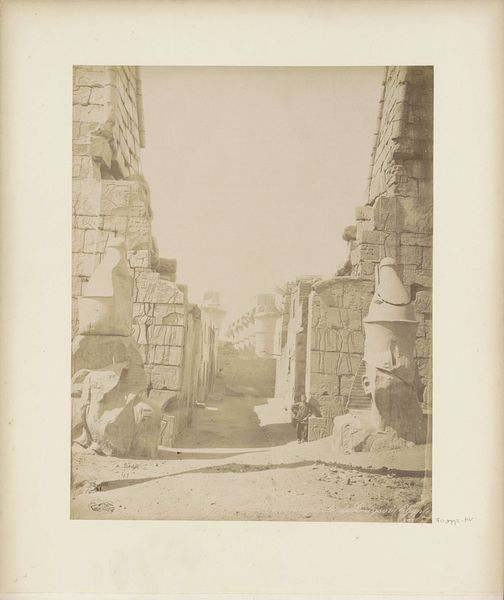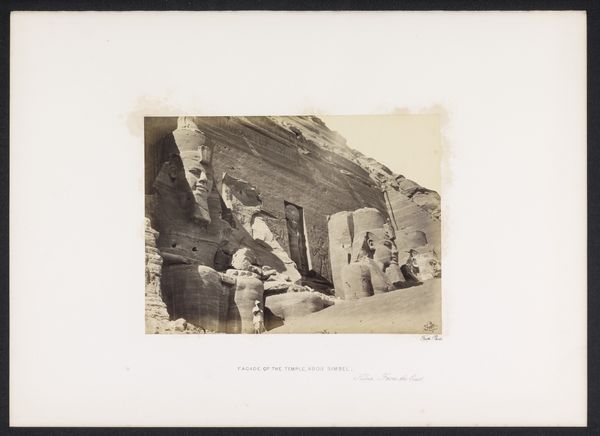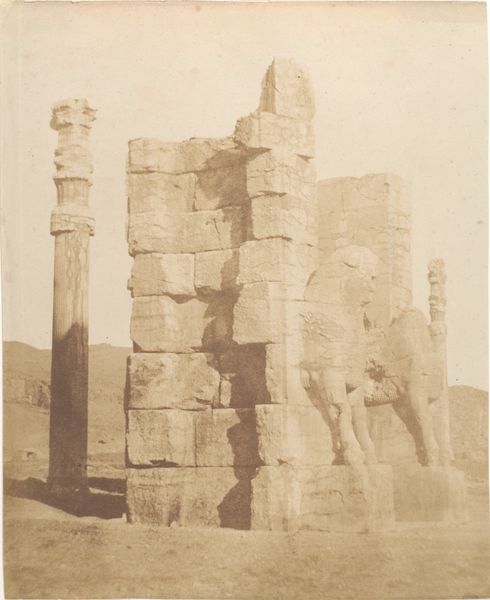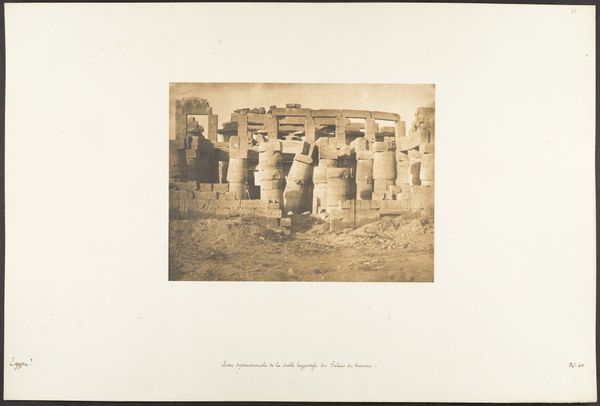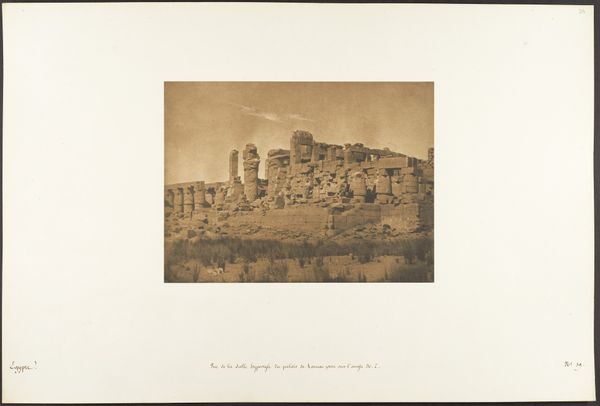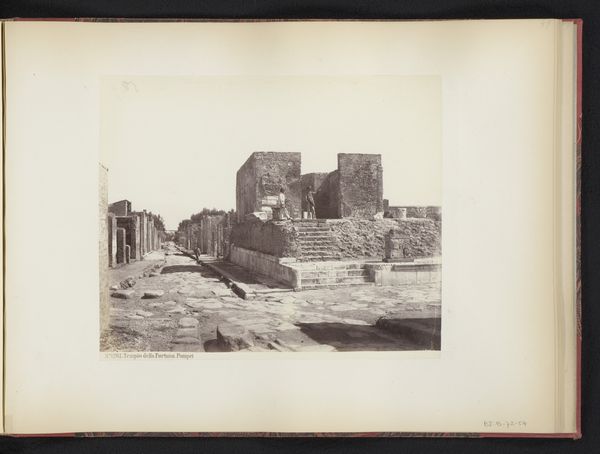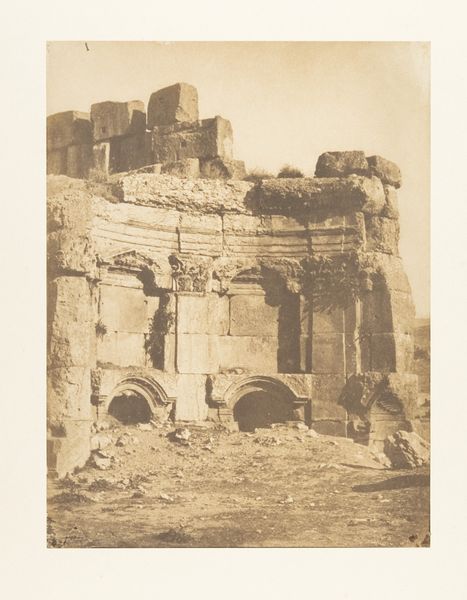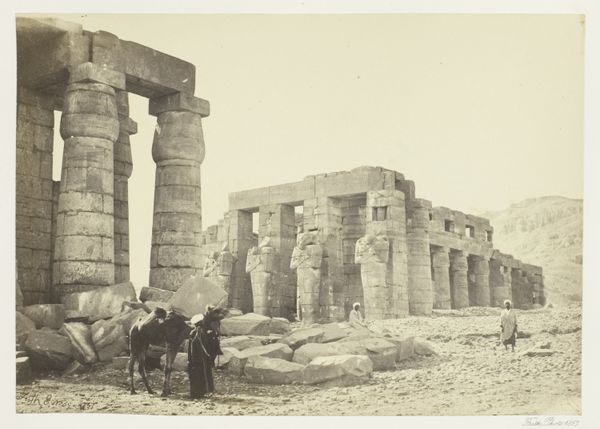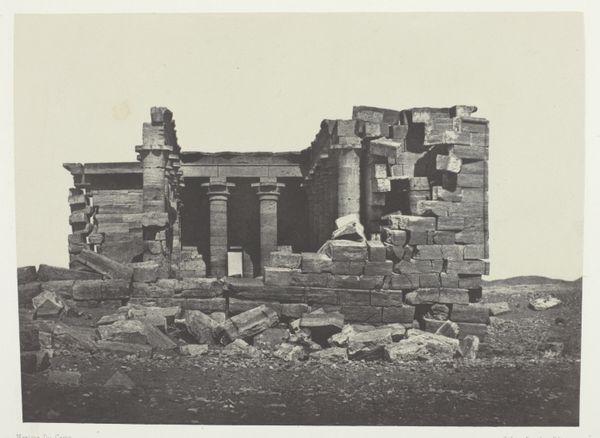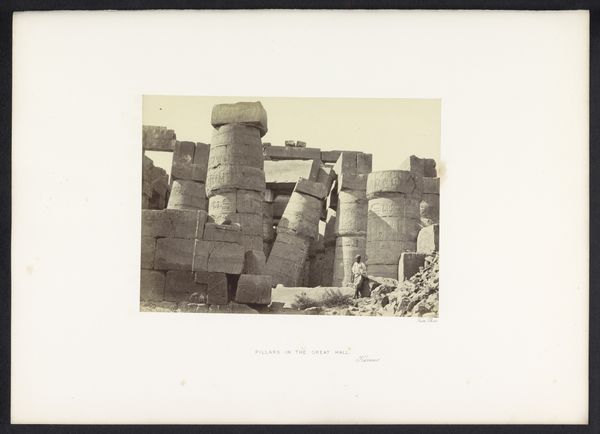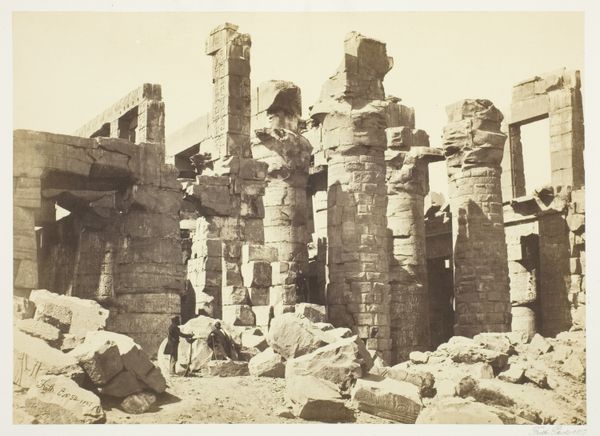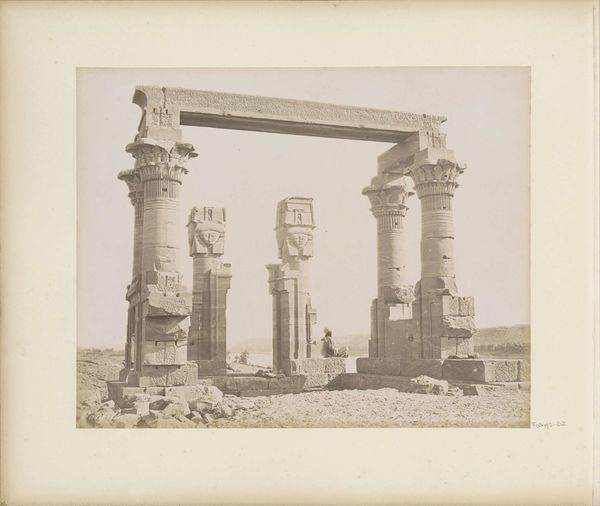
print, photography
#
ink paper printed
# print
#
landscape
#
photography
#
romanesque
#
ancient-mediterranean
#
cityscape
#
watercolor
Dimensions: height 192 mm, width 243 mm
Copyright: Rijks Museum: Open Domain
Curator: This arresting photographic print captures the Ruins of the Baths of Caracalla in Rome, dating roughly from 1875 to 1900 and created by Edizione Brogi. It really documents how past empires are interpreted and presented to the public. Editor: It strikes me as melancholy, even haunting. The vast, empty space and the fragmented architecture speak volumes about time and loss. Curator: The composition guides your eye through the skeletal remains of a once-grand structure. Think of the politics involved in memorializing the Roman empire, especially at a time of colonial expansion across Europe. This is carefully constructed image-making, designed for cultural messaging. Editor: Indeed. The Roman arches, although incomplete, still suggest power and sophistication, don't they? Bathhouses were, after all, symbols of civic pride and social life, not to mention advanced engineering, all of which can be easily forgotten when viewing just a picture of ruins. This juxtaposition really brings together that cycle. Curator: And in that light, these photographs aren't merely documentation, but instruments to convey narratives of cultural inheritance, empire, and the 'glory' of ancient Rome. Brogi capitalised on this appetite among Europeans. Editor: You can feel the psychological weight of the fallen empire. The ruined state of the baths contrasts so sharply with their original purpose as centers of health, social interaction, and cleanliness, an almost utopian view. What happened to these once-bustling locations really causes you to think of other places and times in similar circumstances. Curator: Ultimately, a work like this forces us to confront how historical narratives are curated and circulated for public consumption and helps inform contemporary cultural discourse. Editor: Yes, the symbols of what was have a fascinating role to play in influencing us in our contemporary environment.
Comments
No comments
Be the first to comment and join the conversation on the ultimate creative platform.
